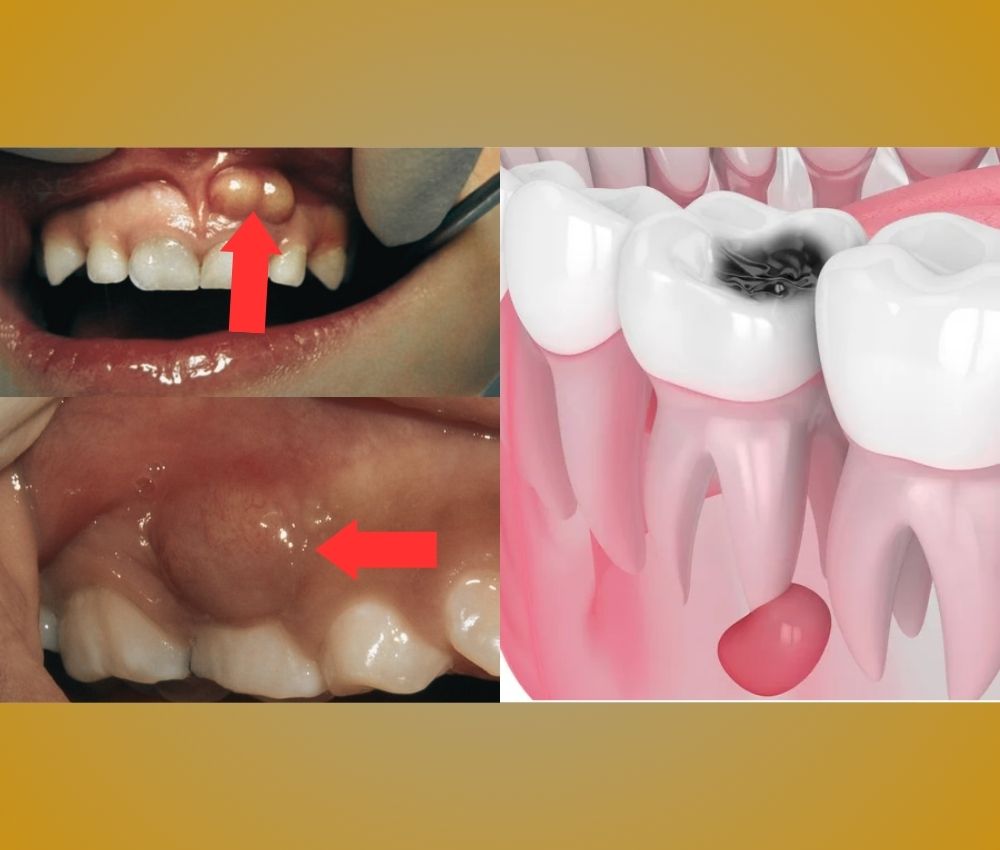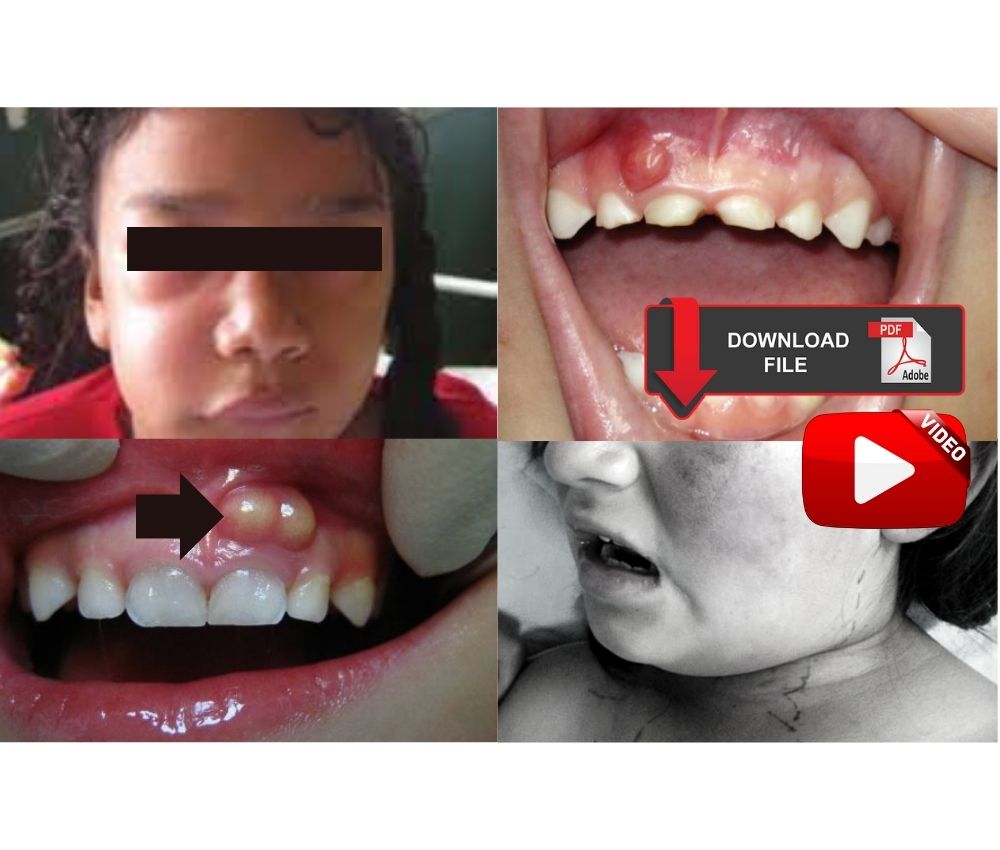Facial cellulitis and angioedema are two potentially life-threatening conditions frequently encountered in dental emergencies. Although both present with facial swelling, they differ significantly in etiology, clinical presentation, and treatment approach.
📌 Recommended Article :
Dental Article 🔽 Dental Abscess, Fistula, Cellulitis, and Ludwig's Angina: Differences, Symptoms & Treatment ... Timely diagnosis, tailored antimicrobial therapy, and prompt referral to specialized care are key to reducing the risk of complications in odontogenic infections.Prompt differentiation is crucial to prevent airway compromise, sepsis, or even death.
Advertisement
✅ Definition
➤ Facial Cellulitis: A bacterial infection of the dermis and subcutaneous tissues of the face, often secondary to odontogenic infection.
➤ Angioedema: A rapid, localized, non-infectious swelling of the deeper dermis and subcutaneous tissues, usually caused by allergic, hereditary, or drug-related mechanisms.
📌 Recommended Article :
Dental Article 🔽 Antibiotic Selection in Pediatric Dental Infections: Updated Clinical Criteria for U.S. Dentists ... However, antibiotic prescription in pediatric patients requires careful consideration of the likely pathogens, the child’s age and weight, medical history, drug allergies, and antibiotic pharmacokinetics.✅ Etiology
➤ Facial Cellulitis: Commonly linked to untreated dental abscesses, periodontal infections, or post-extraction infections.
➤ Angioedema: Triggered by allergens (foods, insect bites, latex), medications (ACE inhibitors, NSAIDs), or hereditary C1 esterase inhibitor deficiency.
✅ Clinical Signs and Symptoms
➤ Facial Cellulitis:
° Localized painful swelling
° Redness, warmth, induration
° Fever, malaise
° Trismus, dysphagia in severe cases
➤ Angioedema:
° Sudden, painless swelling of lips, tongue, eyelids, or airway structures
° Absence of erythema or infection signs
° Difficulty breathing or swallowing in severe cases
° Urticaria may be associated in allergic cases
📌 Recommended Article :
Dental Article 🔽 Appropriate Antibiotic Use in Pediatric Odontogenic Infections: Guidelines for Dentists and Dental Students ... This article provides evidence-based, clinically practical guidance for dentists and dental students on the appropriate use of antibiotics in pediatric odontogenic infections.✅ Severity
➤ Facial Cellulitis: Can spread to deep fascial spaces, causing Ludwig’s angina, cavernous sinus thrombosis, or sepsis.
➤ Angioedema: May rapidly obstruct the upper airway, leading to asphyxia if untreated.
✅ Treatment and Medication
➤ Facial Cellulitis
a. First-line antibiotics:
° Amoxicillin-clavulanic acid 875/125 mg orally every 12h, 7–10 days
° Clindamycin 300 mg orally every 6–8h, 7–10 days (if penicillin-allergic)
b. Supportive measures: Analgesics (ibuprofen 400–600 mg every 6–8h), incision and drainage, extraction or endodontic treatment of the source tooth.
c. Hospitalization: Indicated for systemic involvement, rapid progression, or airway risk.
➤ Angioedema
a. Allergic/Histamine-mediated:
° Antihistamines: Diphenhydramine 25–50 mg IV/IM every 6h
° Corticosteroids: Dexamethasone 4–8 mg IV every 8h
° Epinephrine (if airway compromise/anaphylaxis): 0.3–0.5 mg IM (1:1000), repeat every 5–15 min as needed
b. Hereditary Angioedema:
° C1 esterase inhibitor concentrate (20 U/kg IV)
° Icatibant 30 mg subcutaneous injection
c. Airway management: Early intubation or tracheostomy if obstruction is imminent.
📊 Comparative Table: Facial Cellulitis vs Angioedema
| Aspect | Advantages | Limitations |
|---|---|---|
| Etiology | Infectious origin (often odontogenic) guides antibiotic therapy and source control. | Does not exclude non-infectious reactions; may be confused with early inflammatory swelling. |
| Onset | Gradual progression over hours to days supports diagnosis of infection and allows planned dental management. | Sudden onset of angioedema may mimic cellulitis in early stages if history is incomplete. |
| Clinical signs | Erythema, warmth, pain, and induration point toward cellulitis and help localize the dental focus. | Absence of inflammatory signs (heat, redness) suggests angioedema, but overlap can occur in mixed cases. |
| Airway risk | Indirect, through spread to deep spaces (e.g., Ludwig’s angina); allows time for referral and early antibiotics. | Direct, rapid, and often critical risk of airway obstruction; requires immediate recognition and intervention. |
| Initial treatment | Responds to antibiotics, drainage, and dental source control; can be managed in clinic or hospital depending on severity. | Antimicrobials are ineffective; inappropriate use may delay lifesaving measures such as epinephrine, antihistamines, or C1-INH. |
| Urgency and referral | High urgency due to systemic spread risk; hospitalization required if rapid progression or systemic signs are present. | Critical urgency when airway involvement occurs; requires immediate ER intervention (IM epinephrine, airway management) and priority referral. |
💬 Discussion
Although both facial cellulitis and angioedema present with facial swelling, their underlying mechanisms, clinical features, and treatments differ substantially. Dental professionals must be equipped to rapidly recognize the condition, initiate emergency management, and refer to a hospital setting when needed.
📌 Recommended Article :
PDF 🔽 Odontogenic facial cellulitis in a pediatric patient - Diagnosis, treatment and multidisciplinary management ... Facial cellulite spreads to other anatomical regions, aponeurotic plane and tissue spaces. Clinically, facial cellulite is of a soft consistency and with inflammatory signs.✍️ Conclusion
Facial cellulitis is primarily infectious and progresses gradually, whereas angioedema is immunological and develops abruptly, posing an immediate airway risk. Early diagnosis, appropriate pharmacological intervention, and airway protection are vital to prevent morbidity and mortality.
📚 References
✔ Brook, I. (2021). Microbiology and management of odontogenic infections in children. Pediatric Dentistry, 43(2), 113–119.
✔ Zuraw, B. L., & Banerji, A. (2021). Hereditary angioedema: Pathophysiology and management. Journal of Allergy and Clinical Immunology, 148(6), 1520–1530.
✔ Wilson, W., et al. (2021). Management of odontogenic infections. Journal of the American Dental Association, 152(6), 510–519.
✔ Kaplan, A. P. (2020). Angioedema. World Allergy Organization Journal, 13(10), 100455.
📌 More Recommended Items
► Perioral Dermatitis in Children — A Parent’s Guide
► Ludwig's angina in a pediatric patient - Case report (diagnosis, symptoms and treatment)
► Key Differences Between Pediatric and Adult Odontogenic Infections: Updated Clinical Guidelines










